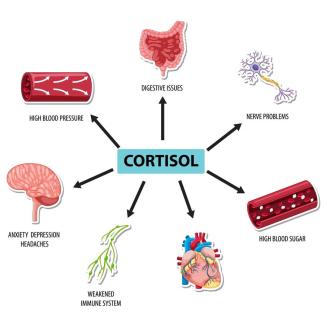
The PHQ-9 (Patient Health Questionnaire-9) is a widely used clinical tool designed to assess and monitor symptoms of depression. It consists of nine questions that are based on the diagnostic criteria for depressive disorders found in the DSM (Diagnostic and Statistical Manual of Mental Disorders). The PHQ-9 is often used by healthcare providers to screen for depression, measure the severity of depressive symptoms, and track changes over time in a patient's mental health.
Key Features of the PHQ-9:
- Self-Reported: Patients can complete the questionnaire themselves, which allows for easy and quick assessment without the need for extensive interviews.
- Nine Items: The tool consists of nine questions that cover various symptoms associated with depression, including mood, sleep, energy levels, and thoughts of self-harm.
- Scoring System: Each of the nine items is scored from 0 to 3 based on how often the patient has experienced each symptom in the past two weeks:
- 0 = Not at all
- 1 = Several days
- 2 = More than half the days
- 3 = Nearly every day
- Scoring and Interpretation:
- After completing the questionnaire, the total score ranges from 0 to 27, with higher scores indicating more severe symptoms of depression. The scoring interpretation is as follows:
- 0–4: Minimal depression
- 5–9: Mild depression
- 10–14: Moderate depression
- 15–19: Moderately severe depression
- 20–27: Severe depression
- After completing the questionnaire, the total score ranges from 0 to 27, with higher scores indicating more severe symptoms of depression. The scoring interpretation is as follows:
- Uses:
- Initial Screening: The PHQ-9 helps in identifying individuals who may be suffering from depression, making it a valuable screening tool in primary care and mental health settings.
- Tracking: It is also useful for tracking the progression or improvement of depressive symptoms over time, particularly during or after treatment.
- Clinical Evaluation: Clinicians use it to aid in the clinical evaluation of a patient’s condition, guide treatment decisions, and assess treatment effectiveness.
- Accessibility: It is simple, quick to administer, and has been validated for use in various settings, including primary care, psychiatric clinics, and research. It is also available in multiple languages, making it accessible across different populations.
- Reliability: The PHQ-9 is considered a reliable and valid measure for diagnosing depression, and it is commonly used in both clinical practice and research.
The PHQ-9 is a practical, reliable, and standardized tool for identifying and evaluating the severity of depressive symptoms. Its ease of use makes it suitable for a wide range of healthcare environments, and its regular application can help monitor the effects of interventions, treatments, or changes in a patient's condition.
Here is the PHQ-9 Questionnaire designed to assess and monitor depressive symptoms. You can use it to evaluate your condition based on how you've been feeling over the past two weeks. For each question, select the answer that best reflects your experience.
PHQ-9: Depression Symptom Assessment
Instructions:
Please select how often you have been bothered by the following problems over the last two weeks:
| Symptom | Not at all (0) | Several days (1) | More than half the days (2) | Nearly every day (3) |
|---|---|---|---|---|
| 1. Little interest or pleasure in doing things | ☐ | ☐ | ☐ | ☐ |
| 2. Feeling down, depressed, or hopeless | ☐ | ☐ | ☐ | ☐ |
| 3. Trouble falling or staying asleep, or sleeping too much | ☐ | ☐ | ☐ | ☐ |
| 4. Feeling tired or having little energy | ☐ | ☐ | ☐ | ☐ |
| 5. Poor appetite or overeating | ☐ | ☐ | ☐ | ☐ |
| 6. Feeling bad about yourself – or that you are a failure or have let yourself or your family down | ☐ | ☐ | ☐ | ☐ |
| 7. Trouble concentrating on things, such as reading the newspaper or watching television | ☐ | ☐ | ☐ | ☐ |
| 8. Moving or speaking so slowly that other people could have noticed? Or the opposite – being so fidgety or restless that you have been moving around a lot more than usual | ☐ | ☐ | ☐ | ☐ |
| 9. Thoughts that you would be better off dead, or thoughts of hurting yourself in some way | ☐ | ☐ | ☐ | ☐ |
Scoring:
To score the PHQ-9, add the numbers for each question to get a total score. The total score determines the severity of the depressive symptoms:
- 0–4: Minimal depression
- 5–9: Mild depression
- 10–14: Moderate depression
- 15–19: Moderately severe depression
- 20–27: Severe depression
Additional Question:
If you checked off any problems, how difficult have these problems made it for you to do your work, take care of things at home, or get along with other people?
- ☐ Not difficult at all
- ☐ Somewhat difficult
- ☐ Very difficult
- ☐ Extremely difficult
This tool is helpful for tracking symptoms over time. If your score indicates moderate to severe depression or if your symptoms persist, it is important to seek help from a healthcare professional.






